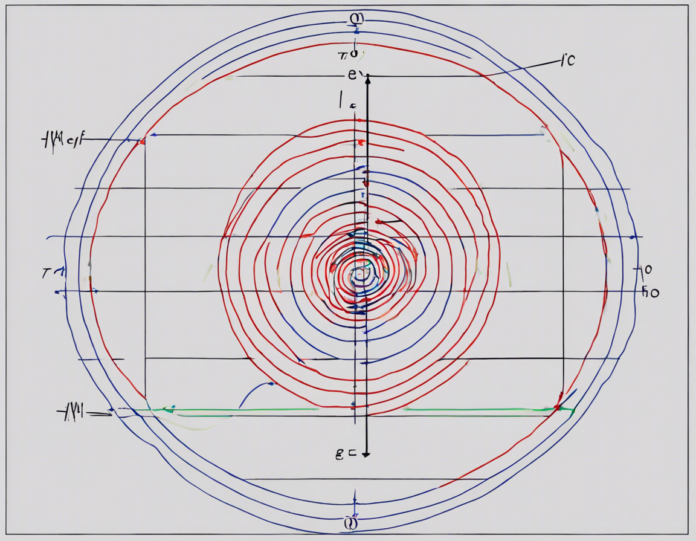Introduction
When a current flows through a wire, it generates a magnetic field around it. This phenomenon forms the basis of electromagnetism and is crucial in various applications, from electric motors to MRI machines. One common setup used to study magnetic fields is a current loop, where a wire is bent into a closed loop and current flows through it. Understanding the magnetic field produced by a current loop is essential for engineers and researchers working in the field of electromagnetism. In this article, we will delve into the on-axis analysis of a current loop and explore how the magnetic field varies along the axis of the loop.
The Magnetic Field of a Current Loop
1. Biot-Savart Law
The magnetic field produced by a current-carrying loop can be calculated using the Biot-Savart law. According to this law, the magnetic field dB generated at a point P by a small element of current Idl in the loop is given by:
[dB = \frac{\mu_0}{4\pi} \frac{Idl \times r}{r^3}]
Where:
– dB is the magnetic field at point P,
– $\mu_0$ is the permeability of free space,
– Idl is the current element,
– r is the distance between Idl and point P,
– $\times$ denotes the cross product.
Integrating this expression over the entire current loop allows us to determine the total magnetic field at a point along the axis of the loop.
2. On-Axis Magnetic Field
When analyzing the magnetic field along the axis of a current loop, we typically consider two main cases:
– On-Axis at the Center: This refers to the point along the axis of the loop that is equidistant from all points on the loop.
– On-Axis Off-Center: This refers to a point along the axis that is at a distance z from the center of the loop.
3. On-Axis at the Center
At the center of a current loop, the magnetic field is perpendicular to the plane of the loop and has a magnitude given by:
[B = \frac{\mu_0 I R^2}{2(R^2)}]
Where:
– B is the magnetic field at the center,
– I is the current flowing through the loop,
– R is the radius of the loop.
The direction of the magnetic field at the center of the loop can be determined using the right-hand rule.
4. On-Axis Off-Center
When considering a point off-center along the axis of the loop, the magnetic field becomes more complex. The magnitude of the magnetic field at a distance z from the center of the loop is given by:
[B = \frac{\mu_0 I R^2}{2(R^2 + z^2)^{3/2}}]
At various distances from the center, the strength and direction of the magnetic field will vary, providing insights into the spatial distribution of magnetic field lines around the loop.
Applications of On-Axis Analysis
Understanding the magnetic field of a current loop is crucial for various applications, including:
– Design of Electromagnets: Engineers designing electromagnets use on-axis analysis to optimize the magnetic field strength and distribution for specific applications.
– MRI Imaging: Magnetic Resonance Imaging (MRI) machines utilize strong magnetic fields generated by current loops to produce detailed images of internal body structures.
– Particle Accelerators: Research facilities that use particle accelerators rely on precise control of magnetic fields to steer and focus charged particles.
FAQs
Q1: Can the magnetic field of a current loop be zero at any point along its axis?
A1: Yes, the magnetic field of a current loop can be zero at certain points along its axis, such as at a certain distance z from the center in the off-center case.
Q2: How does the radius of the current loop affect the strength of the magnetic field along its axis?
A2: The strength of the magnetic field at the center of the loop is directly proportional to the radius, while off-center, both the radius and the distance from the center play a role in determining the field strength.
Q3: Is the magnetic field inside the loop zero or non-zero?
A3: The magnetic field inside the loop is non-zero and varies in strength depending on the current flowing through the loop.
Q4: How does the direction of the current in the loop affect the direction of the magnetic field along its axis?
A4: The direction of the magnetic field is determined by the right-hand rule, where the thumb points in the direction of the current flow and the fingers curl in the direction of the magnetic field.
Q5: Can the magnetic field of a current loop be shielded or controlled for specific applications?
A5: Yes, techniques such as using magnetic shielding materials or adjusting the current flow can help shield or control the magnetic field for desired outcomes.
In conclusion, the on-axis analysis of a current loop provides valuable insights into the distribution and strength of the magnetic field along its axis. By understanding this fundamental concept, engineers and researchers can harness the power of magnetic fields for a wide range of applications in electromagnetism.

